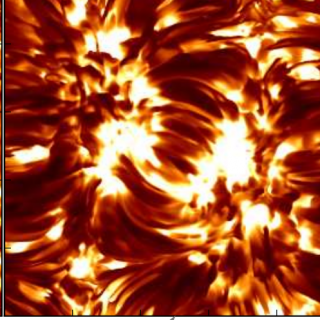Bibcode
Grant, Samuel D. T.; Jess, David B.; Zaqarashvili, Teimuraz V.; Beck, Christian; Socas-Navarro, H.; Aschwanden, Markus J.; Keys, Peter H.; Christian, Damian J.; Houston, Scott J.; Hewitt, Rebecca L.
Referencia bibliográfica
Nature Physics, Volume 14, Issue 5, p.480-483
Fecha de publicación:
5
2018
Número de citas
76
Número de citas referidas
70
Descripción
Magnetohydrodynamic Alfvén waves1 have been a focus of
laboratory plasma physics2 and astrophysics3 for
over half a century. Their unique nature makes them ideal energy
transporters, and while the solar atmosphere provides preferential
conditions for their existence4, direct detection has proved
difficult as a result of their evolving and dynamic observational
signatures. The viability of Alfvén waves as a heating mechanism
relies upon the efficient dissipation and thermalization of the wave
energy, with direct evidence remaining elusive until now. Here we
provide the first observational evidence of Alfvén waves heating
chromospheric plasma in a sunspot umbra through the formation of shock
fronts. The magnetic field configuration of the shock environment,
alongside the tangential velocity signatures, distinguish them from
conventional umbral flashes5. Observed local temperature
enhancements of 5% are consistent with the dissipation of mode-converted
Alfvén waves driven by upwardly propagating magneto-acoustic
oscillations, providing an unprecedented insight into the behaviour of
Alfvén waves in the solar atmosphere and beyond.
Proyectos relacionados

Magnetismo, Polarización y Transferencia Radiativa en Astrofísica
Los campos magnéticos están presentes en todos los plasmas astrofísicos y controlan la mayor parte de la variabilidad que se observa en el Universo a escalas temporales intermedias. Se encuentran en estrellas, a lo largo de todo el diagrama de Hertzsprung-Russell, en galaxias, e incluso quizás en el medio intergaláctico. La polarización de la luz
Ernest
Alsina Ballester